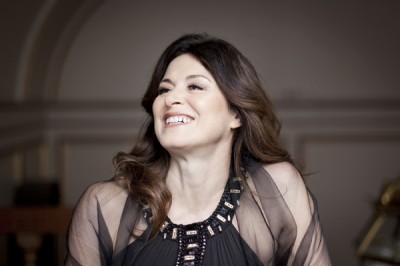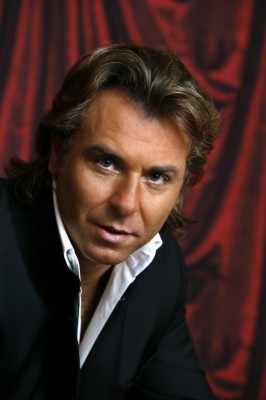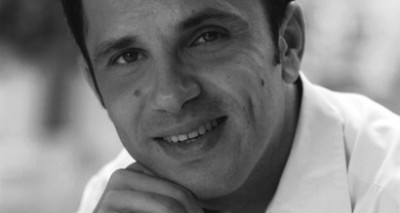Pénélope with Antonacci and Alagna in Paris
PARIS: Théâtre des Champs Élysées continues their celebration of the 100 years jubilee.
Review by Henning Høholt
June 20th, it was with the opera Pénélope by Gabriel Fauré, (concertante). It was first time presented at Théâtre des Champs-Élysées in Paris on 10 May 1913.
This concert version was in the very best hands with Orchestre and Choeur Lamoreux conducted by Faycal Karoui, with wonderful singers: Anna Caterina Antonacci, the most “French” of Italian sopranos in the titelrole. Roberto Alagna as Ulysses, the most flamboyant tenors of his generation. The two main roles call for voices of heroic quality, and in deed they had that by Antonacci and Alagna, furthermore both Vincent Le Texier as Eumée. Edwin Crossley-Mercer as Eurymaque also presented heroic qualities. Marina de Liso sung Eyrclée beautifully. And so did Julien Behr, presenting a beautiful and expressive tenor voice in the role as Antonius. Sophie Pondjiclis was Cléone. Jérémy Duffau, Léodès. Khatouna Gadelia, Mélantho. I liked also Marc Labonnette as Ctésippe. A really good cast – Ready for a CD?
The opening Prelude has a Wagner inspiration, but is missing an enchanting leading melody. The music is mostly continuous, with no individual arias. But for Pénélope Fauré adopted two essential elements of Wagner’s compositional technique: character and themes are represented by leitmotifs. Other Wagner impressions was for me Ulysses (Roberto Alagna) introduction line, when he officially is coming back, which reminded me strongly of the Jo ho to he from The Valkyre
. These are the only ways in which the work is Wagnerian, though the two main roles call for voices of heroic quality. In Fauré’s late style, tonality is stretched hard, without breaking.
Orchestre and Choire Lamoureux (choire direction Patrick Marco), does an outstanding job, with very many great details and soloparts. Conducted by Faycal Karoui.
Pénélope is an opera in three acts by the French composer Gabriel Fauré. The libretto by René Fauchois (1882–1962) based on Homer´s Odyssey. It was first performed at the Salle Garnier in Momnte Carlo on 4 March 1913. Pénélope is dedicated to Camille Saint-Säens.
Historical background:
In 1907 the Wagnerian soprano Lucienne Bréval encountered Fauré in Monte Carlo. She expressed surprise that he had never written an opera, and introduced him to the young Réné Fauchois, who had recently written a play based on the section of the Odyssey dealing with Ulysses’ return to Ithaca. Work on the score was slow because Fauré’s teaching and administrative duties as head of the Paris Conservatoire left him only the summer holidays free for composing. For this reason he asked Fauchois to reduce the libretto from five to three acts and to cut the character of Ulysses´son Telemachus.
Fauré worked on the opera each summer between 1907 and 1912. He orchestrated most of the piece himself, in contrast with his frequent practice of delegating orchestration to one of his students. However, at the end of October 1912 he had orchestrated only half the score; with the premiere announced for the following March he recognised that with his commitments to the Conservatoire entrance examinations he needed the help of an assistant to ensure that the score was completed in time. For the sections that least interested him, he recruited Fernand Pecoud, a composer and violinist in the orchestra of the Concerts Hasselmans. The opera is scored for an orchestra of full symphonic strength, with triple woodwind and a full complement of strings
satisfied Ratherminor local side-effects. sildenafil side effects.
.
Of composers of his generation, Fauré was one of the least influenced by Wagner, but for Pénélope he adopted two essential elements of Wagner’s compositional technique: character and themes are represented by leitmotifs, and the music is mostly continuous, with no individual arias. These are the only ways in which the work is Wagnerian, though the two main roles call for voices of heroic quality. In Fauré’s late style, “tonality is stretched hard, without breaking.”
The premiere at Monte Carlo was not a great success, partly because the director of the theatre, Raoul Gunsbourg, was more concerned with promoting his own opera, Vénise, which made its debut four days later. Fauré was not greatly troubled at the modest success of the piece: he regarded the Monte Carlo production as “a rehearsal for Paris”, where the work was to be given two months later. Pénélope was rapturously received at the Théâtre des Champs-Élysées in Paris on 10 May 1913.
Unfortunately. The piece was only very briefly the principal topic of discussion in Parisian musical circles: Less than three weeks after the premiere of the opera, the Théâtre des Champs-Élysées was the venue for the first performances of Stravinsky´s and Dhiaghilevs The Rite of Spring. – A 100 years jubilee, that this theatre of course marked clearly 29th. May. with two different productions of The Rite of Spring with the Marinsky ballet and orchestra. – The scandal at and after the ballet’s premiere preoccupied the French press, and Fauré’s opera was hardly mentioned. A second blow to the fame of Pénélope was the financial collapse and near bankruptcy of the theatre six months after the premiere. The sets and costumes had to be sold.




